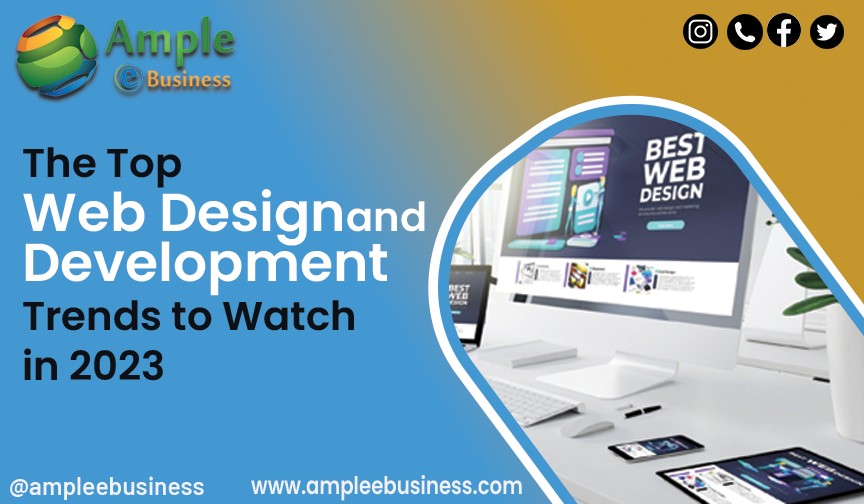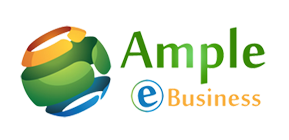
Technology evolves quickly, and web design trends are no exception. Design elements and website features that were once cutting-edge and novel may now appear dated, overused, and clichéd. The last thing you want when visitors come to your website is to lose conversions because it appears dated or breaks important web standards.
Thankfully, web design companies stay on top of all the most recent trends in website design to produce highly functional, user-friendly websites that work well and look fantastic. We want to share some of the most recent technological advancements, trends, and predictions for 2023.
1. Exploratory Navigation
When we talk about exploratory navigation, we mean the patterns that deviate from the standard (top-of-the-screen navigation in all caps with a sans serif font). Experimental patterns, on the other hand, take a more imaginative approach, creating visual interest and directing users to use the website in a particular way.
A menu that resembles a book’s table of contents slides in from the bottom of the screen when you click the Menu button in the top-right corner of the homepage. In order to suggest a reading order, each page is numbered. Your screen’s right side has a list of projects that are numbered and arranged by type and colour.
2. Scrolling Effects
Because they make web experiences more dynamic, scrolling effects—animations started by scrolling—are arguably one of the most well-liked and in-vogue web design elements this year. These are being used more frequently on interactive websites to entice users to scroll down, indicate a content break, and produce a three-dimensional experience. Engineered floors accomplish this by combining vertical and horizontal scrolling.
For instance, the user may see an image of what appears to be a chair on the homepage’s right side. This image zooms out as the user scrolls to reveal a living room that is gradually carpeted. This 3D experience is entertaining and educational.
3. Page speed and website load time are essential
Ultra-fast load times are one of the most important web design requirements. For years, quick loading times have been crucial to UX and SEO, and they still rank highly for websites that want to increase their traffic and conversion rates. According to studies, more than half of internet users anticipate that a website will load quickly and within two seconds of clicking a link. If it takes your website longer than three seconds to load, your visitors will likely leave and are unlikely to return ever again.
The profitability of a company is directly impacted by its website’s performance. Pinterest reportedly decreased perceived wait times by 40% while increasing search engine traffic and sign-ups by 15%, according to data gathered during a study.
4. Drag Interaction
Drag and drop functionality that enables users to move and rearrange elements on a webpage is referred to as drag interaction in web design. By becoming more logical and user-friendly, this kind of interaction can improve the user experience.
1) Users can drag and drop objects to rearrange or group them, for example, to sort a list of goods by price or to filter a list of contacts by location.
2) Users can drag and drop images within a gallery to reorder them, or they can drag an image onto a designated area to upload it.
3) Create custom forms by dragging and dropping form components like text boxes, checkboxes, and dropdown menus.
5. Cinemagraphs
Cinematographic are just one example of the motion-based web design trends that will dominate in 2023. Cinemagraphs, high-definition videos, and smooth-looping GIFs have grown in popularity as a way to add motion and visual interest to otherwise static pages.
In the past, full-screen loops have been more common, but this year, you’ll see smaller animations dotted throughout intricate layouts. These cinematographic add visual interest and encourage scrolling among your readers.
6. Geolocation and content from browsers
You may have visited a website, left for a few hours or days, and then returned to find that the information had changed. You see the same original content you saw the first time you visited the website when you first open it on your phone or another browser.
It’s no secret that the majority of cutting-edge websites keep track of your browsing activity and location. Modern web agencies, however, will advise their clients to show dynamic content, or content based on past user behaviour or information we already have about a user. not universally applicable content conversion can be increased by creating special content for visitors who come back to your website a second or third time.
7. Text-Only
Web designers will start utilising minimalist design in 2023. Some are experimenting with doing away entirely with images and prominent navigation areas, relying instead on a few carefully chosen lines of straightforward text to tell visitors about their business.
The portfolio section, which uses cinematography, hover animations, and an animated cursor effect, contrasts sharply with this contemporary, uncluttered method of information presentation.
8. Design in 3D
The goal of website design this year is to give visitors an immersive experience. Because of this, 3D art is becoming more popular. Anyone can explore 3D design thanks to Adobe’s newest product, 3D Modeller. Maya is the most widely used 3D modeller in the industry, but this requires more skill. Another excellent choice is Blender, a free 3D design tool.
There are many independent 3D modellers on Fiverr and UpWork if you want to add a 3D design to your website but are intimidated by the size of the project. Just take a look at a few of the Dribbble examples. This design resembles Japanese Kawaii, a cutesy culture that emphasises childlike objects and pastel colouring.
9. Micro-Animation
Micro-animations are tiny, understated animations that are used to improve the user experience in web and mobile interfaces. These animations are frequently used to give feedback, signal changes, or just make the user interface more enjoyable.
Micro animations, as you might have guessed from the name, are brief animations. Small, however, does not imply insignificance in this instance. When it comes to guiding users through their interactions with your website, micro animations are incredibly helpful.
Since they have gained popularity recently, micro animations will be used more naturally in 2023. We’ll be considering how things move if they’re on a curve or wheel rather than a flat plane, as our UI/production designer explained.
10. Navigation on mobile devices with ease
Designing responsively is no longer sufficient. No matter the size of the device, your website should be functional and easy to use! However, the goal of web design in 2023 will still be to create websites that are user-friendly on mobile devices.
What does “thumb-friendly” actually mean?
We’re discussing how we use our phones. Look at how you’re holding your phone if you’re reading this on one right now. Your thumb is doing all the work because your fingers are likely wrapped around the back of your phone (or a phone grip).
11. Material Design
Google first unveiled the design language known as “Material Design” in 2014. Traditional web design appears uninspired. In material design, textures and colour are imitated by using shadows and colour.
The icons used by Google for its software are a great illustration of material design. Good examples of material design include the shadows on the Gmail envelope and the calendar. It’s very subtle, but it makes a big difference in giving the icons a three-dimensional appearance. In 2023, we anticipate seeing a lot more material design!
12. Design inspired by Y2K
The 2020 Y2K aesthetic revival will continue for at least a little while longer. Websites will start incorporating nods to the popular Y2K style in 2023 to evoke a feeling of nostalgia. Even famous people use the aesthetic on their artist websites; for some healthy inspiration, visit the website of singer and actress Olivia Rodrigo.
13. Design Inspired by Sci-Fi
With films like Dune: Part Two, Rebel Moon, and Transformers: Rise of the Beast coming out this year, sci-fi will undoubtedly be popular in 2023. Futurism is a nod to what we believe will take place, and sci-fi design is a nod to that.
This trend has the potential to draw in your audience and establish your brand as firmly modern. Technology and science are important components of this trend, so the sci-fi-inspired design is especially beneficial for tech brands.
You can achieve this look with metallic and bright tones, but don’t be afraid to add a dash of 80s retro to finish the look.
14. Dark Mode
Several purposes are served by dark-mode web designs. Practically speaking, they aid in lowering eye strain, a problem for many as we spend more and more time staring at screens. In terms of aesthetics, dark mode gives your website an effortlessly sleek appearance while enabling you to highlight other design elements by simply darkening the elements around them.
15. White Space
Giving content space to breathe through the use of white space is more important than trying to fit as much information as you can on the screen. Visitors to your website will have a more tranquil experience, and the content will stand out more clearly and be easier to read.
The spacing we use between elements is simply referred to as “white space.” As long as the space is empty, it need not be white. Because of this, it’s also referred to as “negative space.”
To create one of the best website designs in 2023, you don’t necessarily have to take into account all of these trends—in fact, we doubt it’s even possible. However, even adding a few noticeable elements or subtler details can significantly enhance the user experience (UX) of your site, resulting in higher engagement, more CTA clicks, and a better outcome for your online business. To learn more about our services, get in touch with Ample eBusiness.

